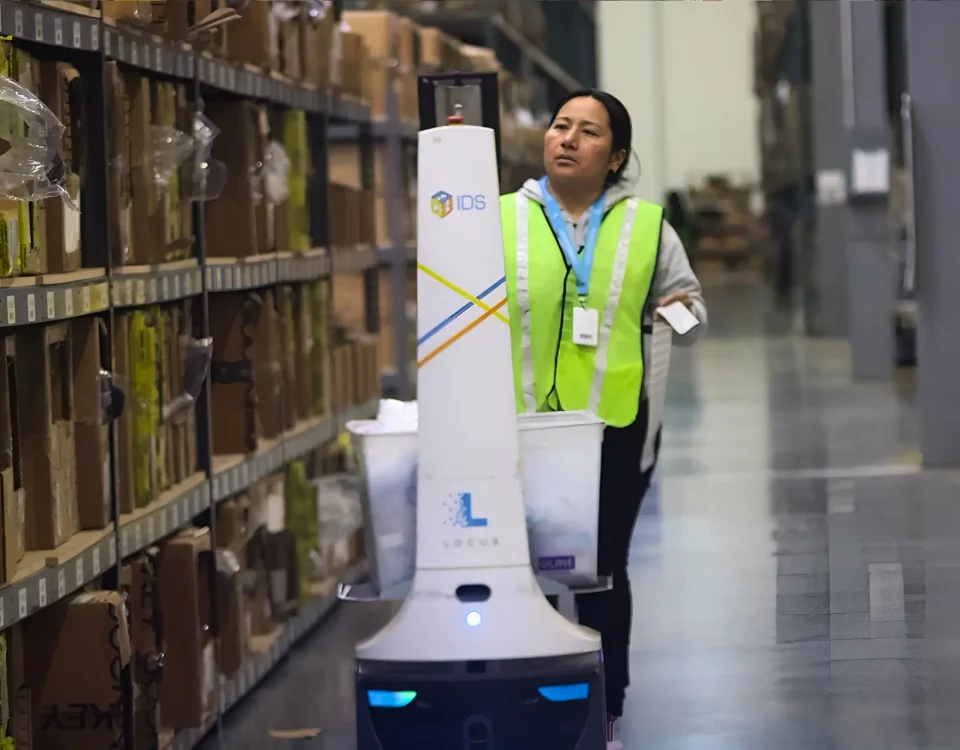Omnichannel fulfillment is no longer a competitive advantage—it’s the baseline.
Every major brand has integrated multiple sales channels, but few are fully optimizing their fulfillment execution.
Inventory misalignment, processing delays, inefficient warehouse placement, and disjointed returns processes continue to plague even the most established brands. Speed and accuracy alone are not enough—fulfillment must be predictive, flexible, and seamlessly integrated across all touchpoints.
In this article, we’ll examine how omnichannel fulfillment improves customer satisfaction, the hidden inefficiencies that drive customer dissatisfaction, and advanced strategies to optimize execution.
Inventory Allocation: The Silent Revenue Killer
Most brands believe they have omnichannel inventory visibility—but visibility alone doesn’t solve allocation inefficiencies. Poor stock positioning leads to longer fulfillment times, higher shipping costs, and canceled orders due to inaccurate stock synchronization.
Where omnichannel inventory management often fails:
- Overstocking vs. Understocking: Warehouses are overstocked on slow-moving SKUs while high-demand items sit in the wrong locations.
- Inefficient Warehouse Distribution: Orders are frequently fulfilled from national distribution centers instead of regional hubs, increasing transit times and shipping costs.
- Lack of Demand Forecasting Integration: Many fulfillment systems don’t dynamically adjust inventory distribution based on real-time sales velocity and regional demand.
Inventory mismanagement isn’t just an operational issue—it’s a direct revenue drain. Customers expect fast, reliable delivery, and when fulfillment delays occur due to poor stock allocation, customer satisfaction and retention suffer. Optimizing inventory placement across all fulfillment channels is critical to ensuring efficiency and profitability.
This is one of the most overlooked factors in how omnichannel fulfillment improves customer satisfaction—when customers receive orders faster and more accurately, they are far more likely to reorder.
Advanced Strategy: Integrate predictive analytics with real-time demand sensing to dynamically shift stock before customer demand spikes—reducing split shipments and optimizing fulfillment speed.
Intelligent Order Orchestration: Why Most Brands Still Get It Wrong
Many retailers and brands still use rules-based order routing, which doesn’t account for real-time logistics variables like carrier capacity constraints, labor shortages, or regional disruptions. This results in inefficient fulfillment decisions that drive up costs and delay deliveries.
Where traditional order orchestration fails:
- Static Fulfillment Rules: These prioritize predefined criteria (e.g., ship from the closest warehouse), but ignore warehouse workload and carrier capacity constraints.
- Failure to Leverage Store Fulfillment at Scale: Many retailers still treat store fulfillment as a backup strategy rather than an integrated part of their fulfillment network.
- Reactive Instead of Proactive Decision-Making: Brands often adjust routing after disruptions occur, rather than anticipating and preventing issues in real time.
A modern omnichannel strategy requires dynamic fulfillment that adapts to constantly changing variables. Rigid fulfillment rules create bottlenecks that slow down deliveries and increase costs. Brands that lack flexible, data-driven order routing risk losing customers to competitors with more responsive fulfillment systems.
Advanced Strategy: Implement dynamic order routing AI that continuously re-evaluates fulfillment logic based on live warehouse capacity, transportation network constraints, and customer urgency.
Returns as a Competitive Differentiator (Not Just a Cost Center)
Most brands see returns as a logistical burden, but the smartest operators turn them into a competitive advantage. Customers demand seamless, cross-channel returns—but for many companies, return logistics are still fragmented, leading to higher costs and a frustrating experience.
Where return logistics often fall short:
- Warehouse processing bottlenecks delay refunds and replacements, reducing customer retention.
- Lack of return inventory reintegration results in unnecessary markdowns and stock losses.
- Inconsistent return policies across channels confuse customers and create negative brand sentiment.
Returns are no longer just about logistics—they’re a key part of the customer experience. A poorly managed returns process drives dissatisfaction, while an efficient, omnichannel return strategy increases repeat purchases and customer lifetime value. Brands that treat returns as an opportunity rather than a cost center create a competitive edge.
When brands streamline returns across multiple channels, they enhance convenience, increase repurchase rates, and improve brand perception—clear proof of how omnichannel fulfillment improves customer satisfaction.
Advanced Strategy: Deploy automated return-to-stock optimization—analyzing returned items in real time to determine whether they should be resold, refurbished, or redistributed to a higher-demand region.
Proactive Fulfillment Communication: The Next Battleground for Customer Experience
Customers expect full transparency on order status, potential delays, and resolution options before they even have to ask. Yet, most brands still rely on reactive customer service models, responding to issues rather than proactively solving them.
Where fulfillment communication often breaks down:
- Lack of proactive delay notifications frustrates customers because they don’t hear about issues until their order is already late.
- Disjointed communication across fulfillment partners leads to mixed messaging and inconsistent customer service.
- Failure to provide self-service options forces customers to contact support for basic order status updates.
Proactive order communication is no longer optional—it’s an expectation. Customers want real-time updates, automated resolutions, and seamless communication across every channel. Brands that fail to deliver this level of transparency risk eroding trust and losing long-term customer loyalty.
Advanced Strategy: Implement real-time, automated issue resolution—such as AI-powered chatbots that offer instant order updates and resolution options without human intervention.
Omnichannel fulfillment is not just about integrating sales channels—it’s about execution at scale. Many brands have the infrastructure, but inefficiencies in inventory allocation, order orchestration, and fulfillment communication create costly bottlenecks. Without predictive analytics and dynamic fulfillment strategies, brands struggle with high operational costs, missed delivery expectations, and lost customer trust.
Retail and e-commerce leaders who invest in high-touch fulfillment will drive stronger retention and revenue growth. Those who fail to optimize their fulfillment strategy will fall behind, losing customers to brands that offer speed, flexibility, and seamless service at every touchpoint.
In the end, how omnichannel fulfillment improves customer satisfaction comes down to execution—brands that master fulfillment logistics at every stage will win long-term customer loyalty.












